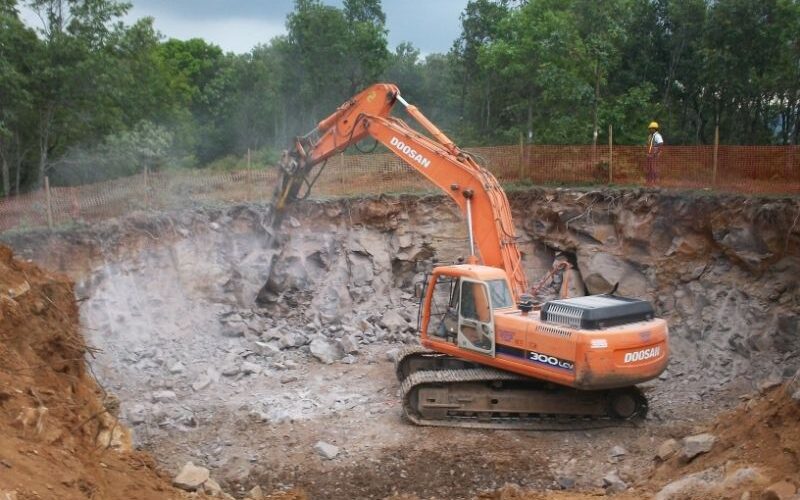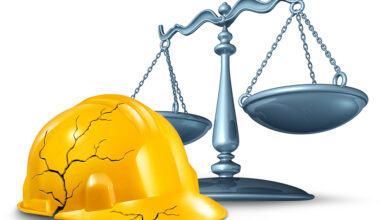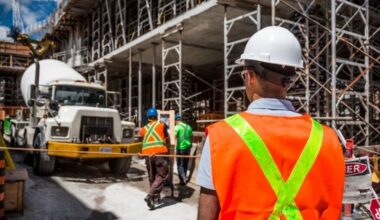When you discover a problem with your home, your first thought maybe, “Do I really have to repair this?” Some home improvement projects can be put off for years, if not indefinitely. Your foundation, on the other hand, could be a different story. Foundation problems can be costly to repair, depending on their severity and the type of foundation you have. If the issue is severe enough, you may need to replace the entire foundation. We will be looking at when it’s time to walk away from foundation issues, early signs of foundation problems, and whether a house can collapse due to foundation issues.
When To Walk Away From Foundation Issues
Before purchasing a home, prospective buyers usually have a home inspection performed as part of the purchasing contract to learn about any existing property health issues. It could be anything from minor cracks and structural issues to HVAC system problems.
Purchasing a house is likely to be one of the most expensive investments made by the average middle-class person. For example, in the United States, severe foundation issues can lead to major structural problems.
To assist you, we’ve compiled a list of early signs of foundation problems that will give you a good idea of the property’s overall health and when to walk away from the issues.
Early Signs of Foundation Problems
Your house is likely to be the most expensive investment you will ever make. That is why it is important to safeguard it. If you suspect a problem with your foundation, it’s a good idea to learn how to recognize the common early signs of foundation problems in houses or commercial structures in most areas of the United States and when to walk away from the issues.
House foundations, concrete slabs, and pier and beam foundations can develop serious problems that necessitate house foundation repair. Basements can also sustain significant damage. Here are the noticeable early signs of foundation problems:
#1. Cracks in the foundation, walls, and floors, as well as other fractures
If you’ve noticed gaps in your foundation or on the brick exterior of your house or business, it could indicate that you have one of the many conditions that indicate a foundation problem. Cracks in the floor, fissures in the walls, and a broken chimney can all indicate trouble.
Your structure’s foundation may shift over time due to a variety of factors. When this happens, your foundation may shift and gaps may become a major issue. Expanding and contracting soils, as well as bad weather, are often to blame for the problem. This is a good time to walk away from the foundation issues.
#2. Sinking Or Settling Of The Foundation
Have your house or other structure checked out if it appears to be sinking or has settlement issues. This is due to the fact that settling is another common sign that you may have a foundation problem. You may notice that one side of your house is lower than the other, or that the center of your commercial building is sinking over time.
If this is the case, your foundation may need to be lifted and interior or exterior foundation piers installed. These are installed in the interior of your structure or placed around the perimeter of your foundation to raise it. As many people who have concrete slab foundations have found out, installing interior foundation piers means breaking the concrete and making a mess.
#3. Foundation Upheaval
If your slab foundation has shifted upward, you are experiencing foundation upheaval. This is one of the eight signs of foundation problems and may indicate that your structure is experiencing the inverse of “foundation settling.” Heaving typically affects the perimeter of a concrete slab foundation, but it can also affect the interior of your home, including hallways, doorways, and other areas. Outside, garage walls are nearly always pushed upwards as well.
Soil expansion and contraction, excessive moisture due to rain or under-slab plumbing leaks, and frost heave are all causes of foundation upheaval in slab foundations. Moisture has the greatest impact on clay soils because this type of soil expands and gains volume when wet.
#4. Doors that are stuck or do not open and close properly
If you’ve noticed your doors sticking, it’s usually an indication that there’s a problem with your foundation. Interior doors that are affected tend to stick or drag at the top. Exterior doors that have problems with their foundation are more likely to drag at the threshold or hang down at the top, making them look different.
For example, the top left side of the door may be higher than the top right side. It could be off by as little as 14″, but the difference grows to 12″ or more. French doors and other double doors may not meet in the middle or hang properly. This is a problem that affects all types of slab, pier, and beam foundations, whether on a house or a commercial structure. This type of trouble can happen to any property.
#5. Cracks in window frames or around exterior doors
Homeowners frequently notice gaps around their exterior window frames and around their exterior doors. They might even notice that their doors no longer latch. This is an early indication of a problem with the foundation.
When something is wrong, double doors frequently do not align correctly, making them difficult to close. Furthermore, door frames can become crooked and prevent all types of doors from functioning properly. If you notice anything like this, you should conduct a visual inspection of your house or other property.
#6. Floors that sag or are uneven.
If you’ve noticed that your floors aren’t level or appear to be sagging, bowing, or dipping, this could be an indication of a problem. When pier and beam foundations are impacted by foundation issues, floors sag and squeak. Floors on concrete slabs are prone to being uneven or out of level.
Slab foundations are affected differently than pier and beam foundations because they are directly on the ground. While both have flooring problems, the early signs of damage are not the same for foundation problems.
#7. A Wet Crawl Space in a Pier-and-Beam House.
Heavy moisture in the crawl space can indicate that the foundation has or will soon develop problems. It’s critical to figure out why the crawl space is wet and then take steps to reduce moisture.
Keep in mind that excessive moisture can attract termites and cause the wooden beams beneath your house or building to rot. Even when you’re inside your house, crawl spaces can emit a foul, musty odor that you may detect even when you’re not. Mold and mildew are major issues in wet crawl spaces.
#8. Countertops and cabinets are separated from the walls.
Have you ever noticed that your kitchen cabinets or countertops appear to be tilting away from the wall? At first, it may appear that they’ve moved a tiny bit, but before you know it, the gap is 1/8″ wide. Your cabinets or countertops will soon appear to be 1/2″ or more away from the wall. You’ve got major problems at that point.
Whenever you notice these signs in your foundation, it could be a good time to walk away from the foundation issues instead of spending the time and money to repair them.
Foundation Cracks to Be Concerned About
Have you ever noticed shrinkage cracks on the walls or floors of a neighbor’s, friend’s, or family member’s house? It is, however, a clear indication of foundation problems.
After a concrete block has formed its shape, it must be handled professionally in order to be adjusted with other blocks. Otherwise, it may cause breakage and structural integrity problems.
Here’s a quick rundown of the most serious cracks caused by foundation issues:
- Horizontal Cracks: These are caused by soil expansion and freezing, as well as high water saturation. These cracks, as well as diagonal cracks, are very clear signs that you need to get a new foundation.
- Shrinkage Cracks (L-Shape Cracks): These appear where the foundation moves up and down the hillside.
- Small Cracks (Hairline Cracks): These cracks appear between the concrete blocks of the foundation and are not a cause for concern.
How to Check Foundation of House
Checking for foundation issues is critical if you’re buying a house that has had previous foundation repair. The presence of a lavishly decorated interior does not imply a solid foundation. If you live there for a long time, it could have a big impact on the property’s structural integrity.
Here are some places to look for signs of a sinking foundation:
- Door frames
- Casements for Windowsills
- Odors emanating from a musty basement
- Cracks in the floor and walls.
- Mold
- Walls that are bent
- The chimney’s structure and health
- Cracks in the walls and windows (exterior).
- Sagging floors and ceilings
Can a House Collapse from Foundation Issues
The first question that may come to mind is, “Should I buy a house that needs foundation repair?” Similarly, you may be concerned about a house about to collapse due to foundation issues.
This could put you in a panic and impair your judgment when making a decision. But, no, the foundation issues will not cause the house to collapse unexpectedly. It takes time for the house to cave in on the foundation.
Most people do live in houses that have foundation problems, often unintentionally. However, these are some of the risks that most people think of when they think of foundation issues that can make a house collapse:
- Mold infestation caused by water seepage
- Water Damage
- Obstructions in window and door frames
- Walls with cracks,
- Floors that are uneven.
The risks of a house collapse and giving in to foundation issues are higher, depending on how long the structure has faced foundation problems.
When is a foundation no longer repairable?
Sometimes a foundation is so unstable or badly damaged that it isn’t worth repairing. In general, a foundation is considered “beyond repair” when the necessary repairs would still not make the foundation safe. Here are a few signs that it may be time to leave your foundation.
- Sagging exterior walls. Walls that are bowing or bulging inward indicate that there is a lot of pressure on the foundation. If walls are left bulging for an extended period of time, the damage may become too severe to repair.
- Floors that slant. Uneven floors are an indication that your foundation is sinking into the ground, but when they begin to have a serious slope to them, the problem has gotten much worse. If your house has sunk too far, it may be too late to save the foundation.
- Cracks that run in opposite directions. A crack in the wall is frightening enough on its own, but it becomes even more so when it runs up or down the wall in different directions. This means that there is a lot of pressure on your foundation and that the materials can’t handle it.
What Can a Structural Engineer Do for You?
When you hire a professional foundation repair company to inspect your foundation, they may bring in a structural engineer to evaluate its condition. Structural engineers are specifically trained to assess the stability of a structure, so they will be able to advise you on whether or not the foundation is worth fixing and whether you should stay in your home or walk away from the foundation issues.
Do Foundation Issues Make It Harder to Sell Your House?
If you’ve decided to walk away from the foundation issues instead of repairing them, you’ll likely sell your house. Listing a house for sale can be a stressful process, and it can be even more stressful if the house has a foundation problem.
The good news is that foundation issues do not prevent you from selling your home. You’ll need to have an inspection before listing the house, and then you’ll need to disclose the foundation issue to any potential buyers. Some buyers actively seek out homes with foundation issues, mold, and other issues in order to “flip” them and either sell or live in them. If the flipping market in your area is strong, you’ll have a good chance of finding someone willing to buy your house, even if it has a severely damaged foundation.
Conclusion
You are well aware of the numerous factors that surround a property transaction involving a house with foundation issues. While you may feel compelled to back out of the deal due to such issues, it is critical to review the purchase contract you agreed to prior to the home inspection. Finally, you should be cautious at all stages of purchasing a property because this is how major issues and problems are revealed.
Frequently Asked Questions
Do foundation problems always get worse?
FOUNDATION DAMAGE GETS WORSE OVER TIME, REGARDLESS OF THE CAUSE. If you’re concerned about your home because of any of the foundation settlement warning signs listed above, the best thing you can do is take action right away. Hire a professional to inspect your foundation and determine whether or not you have a problem.
Are foundation repairs worth it?
Because foundation repairs are typically not covered by homeowners insurance, it can be difficult to determine whether the expense is worthwhile. While it all depends on your end goal, the answer is usually yes: foundation repairs are worthwhile.
Do foundation issues come back?
After foundation repair, your repaired foundation will settle again in the same manner as when it was first installed. It will be minor and will most likely not cause any new problems, but you should wait for it to settle before addressing the existing issues.
Can you ignore foundation issues?
You can recover if you ignore a developing foundation problem for a few days, weeks, or even months, but you may miss an important opportunity to begin an affordable, DIY preventive maintenance program to correct the problem. However, if you wait a year or more, you may end up with higher repair costs.
Related Articles
- RESIDENTIAL STRUCTURAL ENGINEER: How & When To Hire a Structural Engineer
- How To Get Rid Of Rats In Walls And Ceilings
- CLOUD ON TITLE: What It Is And How To Remove It
- CONSTRUCTIVE EVICTION: Definition & Guide On How It Works In Different States
- A Guide to Sewer Scope Inspection 2022: Overview and Importance






